I Got to Review the New California Forever Plan
An epic ambition in townbuilding reveals a loveable new city
THE CALIFORNIA FOREVER PLAN
Today I had the opportunity to review an extraordinary document — the Suisun Expansion Specific Plan by the California Forever team, proposing a brand-new city in Solano County, California. It outlines a 40-year vision for a complete, sustainable community — and it’s unlike anything proposed in America, at least in a century.
The first thing that stands out is its sheer scale. This would be the largest new town built in the United States since World War II, ultimately housing a population of 400,000 people on 15,700 acres of land. At 16,326 people per square mile, Suisun is about six times the density of an average Southern city.
What makes it even more remarkable is that over half the land area — about 5,200 acres — will be dedicated to open space, greenbelts, and recreation.
The plan also implements something I’ve long argued is key to sustainability and fiscal prudence: a minimum dwelling units per acre. Most zoning codes enforce maximum dwelling units per acre, guaranteeing sprawl. This one flips that logic — demanding density as a precondition of urbanism and human flourishing.
The physical form is also impressive. Buildings across the mixed-use zones rise to an eight-story common height, matching that of the world’s great walkable cities. Paris and Barcelona both hover around this threshold — each with about 100,000 people per square mile — and Suisun’s plan fits that lineage beautifully.
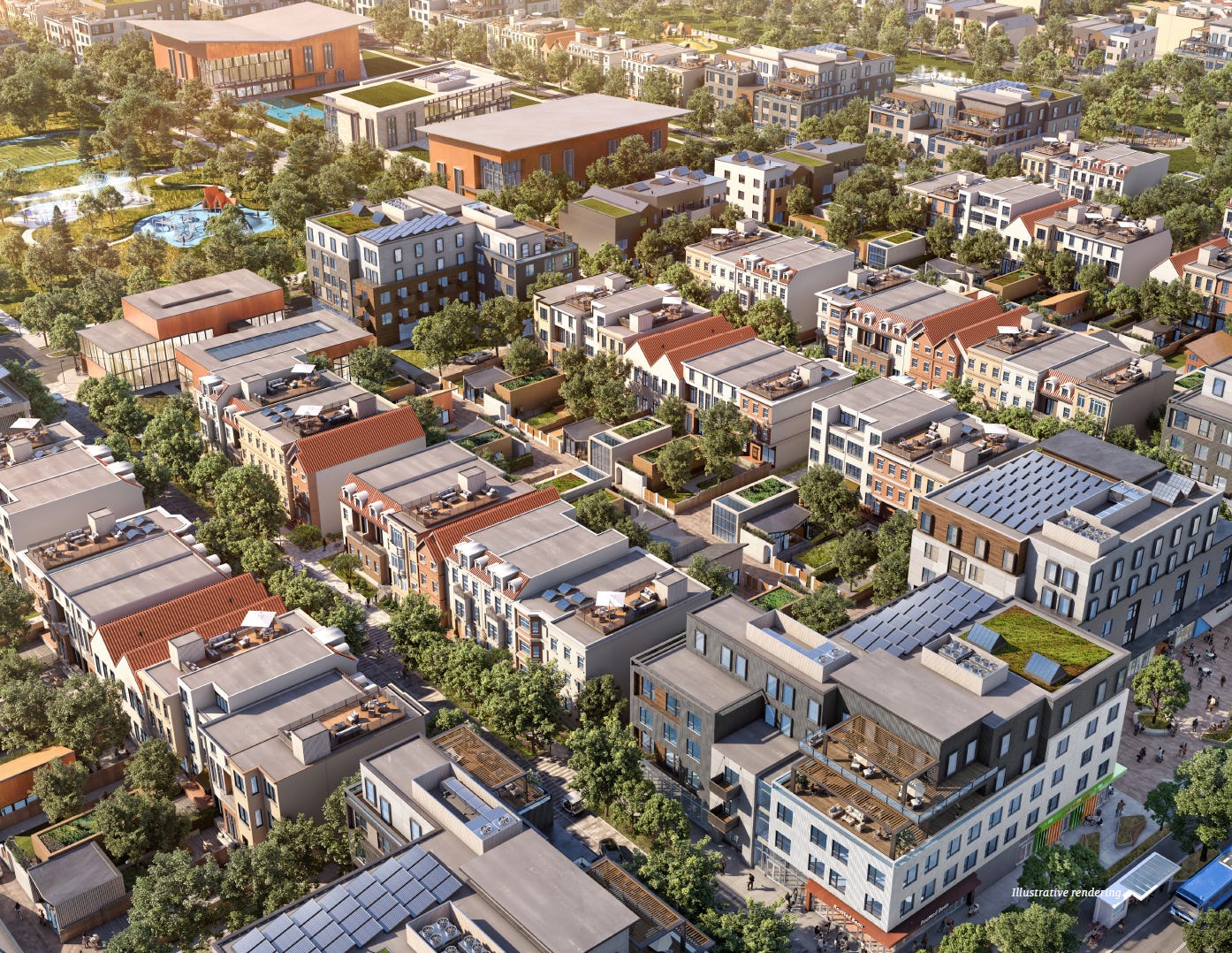
In the spirit of European precedent, the plan proposes “edge parking”, keeping garages at the perimeter so the interior can prioritize walking and biking. Residents will be able to move through a fully human-scaled city without relying on cars. And given its position nearly halfway between Sacramento and the Bay Area, strong intercity transit could make car ownership optional altogether. It’s also a direct rejection of California’s parking-obsessed status quo. It’s a city designed for people, not for cars — and that’s long overdue. In my view, this is precisely what sustainability looks like.
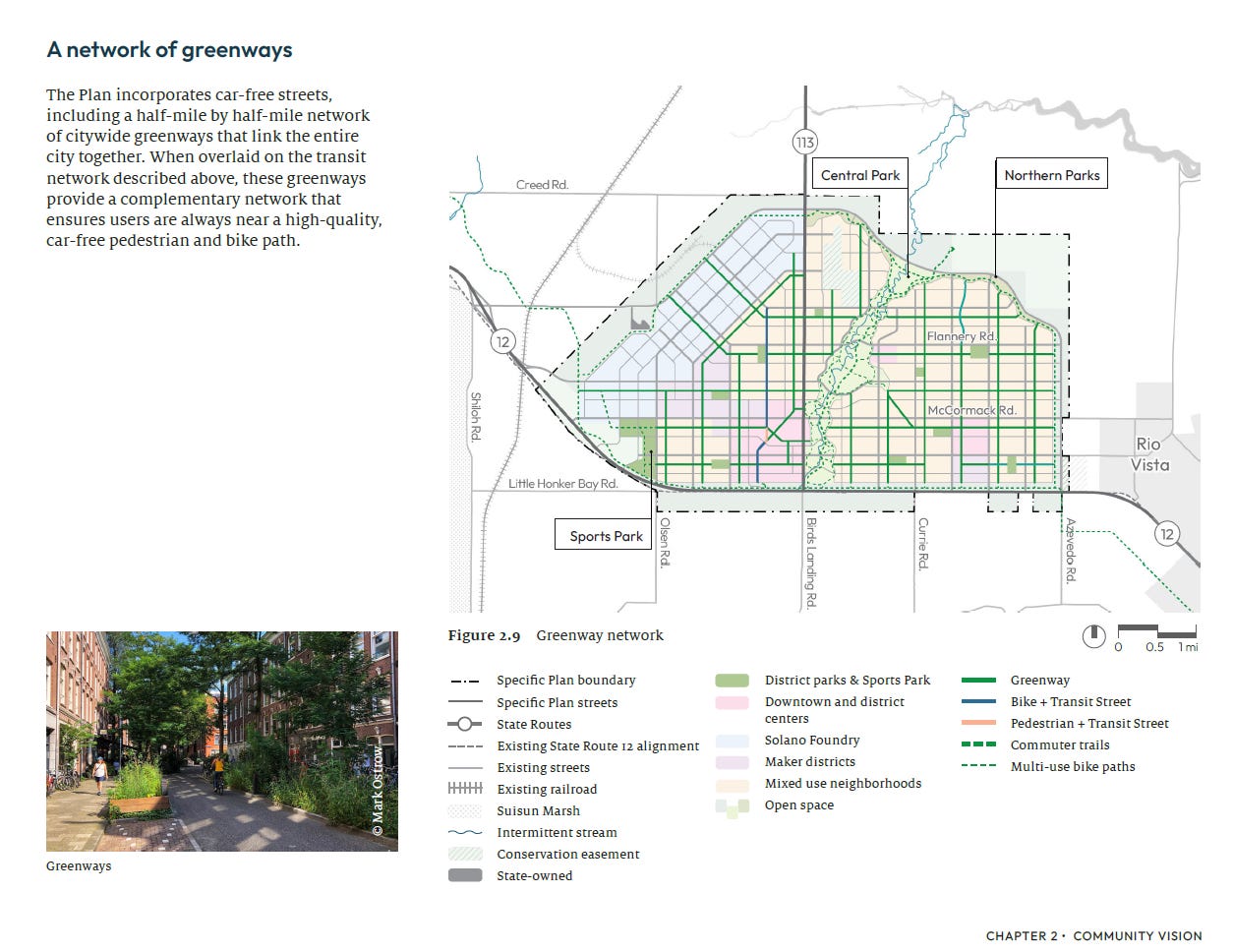
Like Barcelona, Suisun is not just dense — it’s green. The plan calls for an unprecedented variety of sun cover, with streets and parks shaded by native oaks and cottonwoods. Picture walking down a California version of Las Ramblas, framed by midrise buildings and cooled by these living canopies.
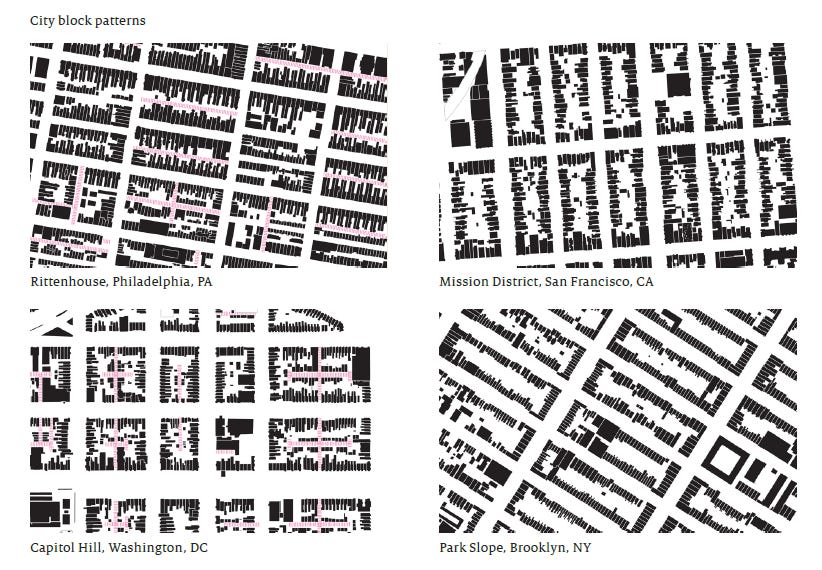
But perhaps the most radical aspect is what this plan represents: a case for private city-building done well. For decades, new urban development has been hamstrung by centralized, bureaucratic planning systems that deliver mediocrity. American cities were once great because risk-takers were free to build them. This proposal feels like a return to that entrepreneurial tradition — one rooted in design quality and market pragmatism rather than process for process’s sake.
We need more new towns — and we need them to be great. As former Congress for the New Urbanism president Rick Cole once put it, “The YIMBYs say we need more housing. But the New Urbanists say we need the housing to be great. I say: why not both?”
That’s an ambitious goal, and California Forever seems to be taking a hell of a swing.
I can’t wait to see it come out of the ground.




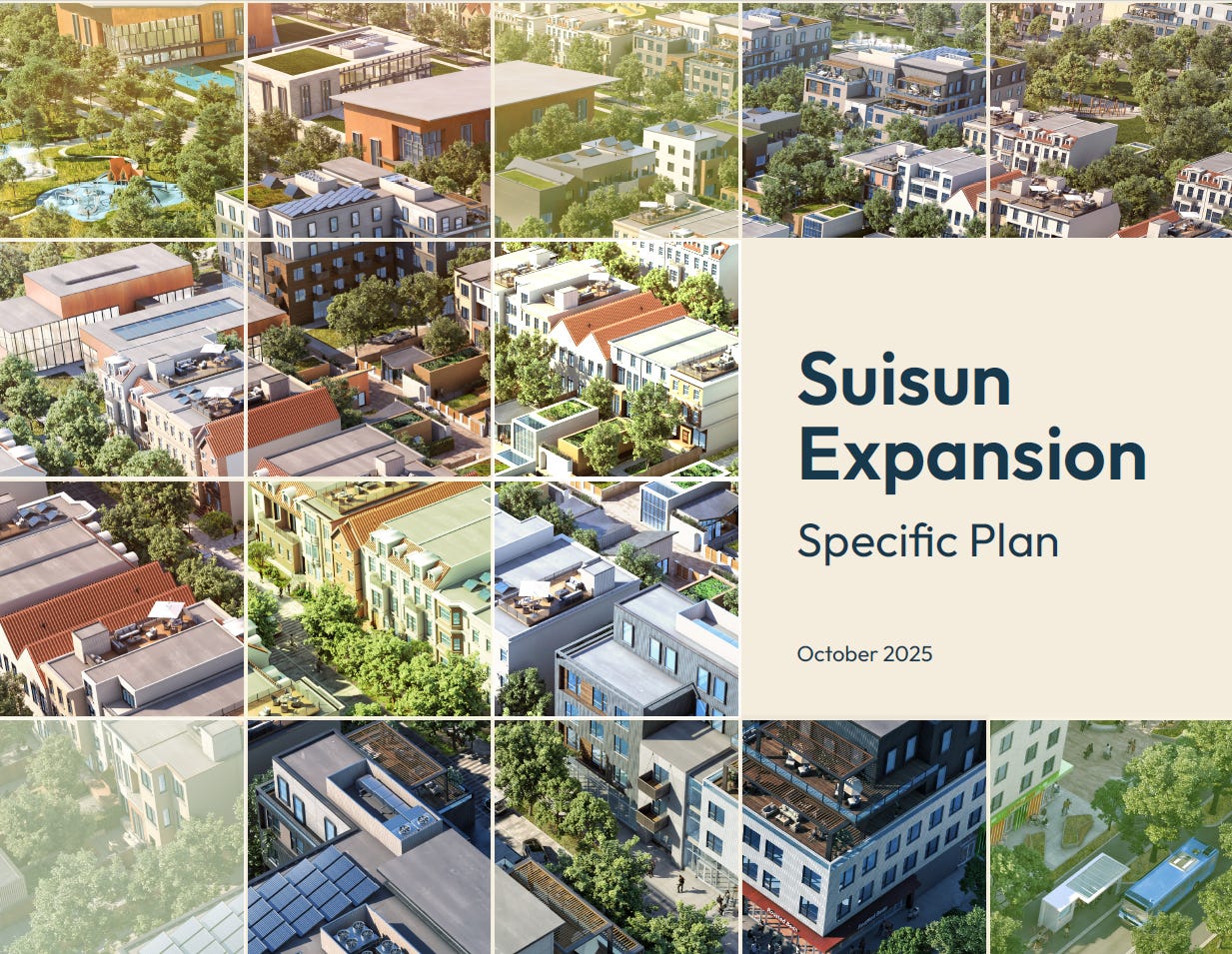
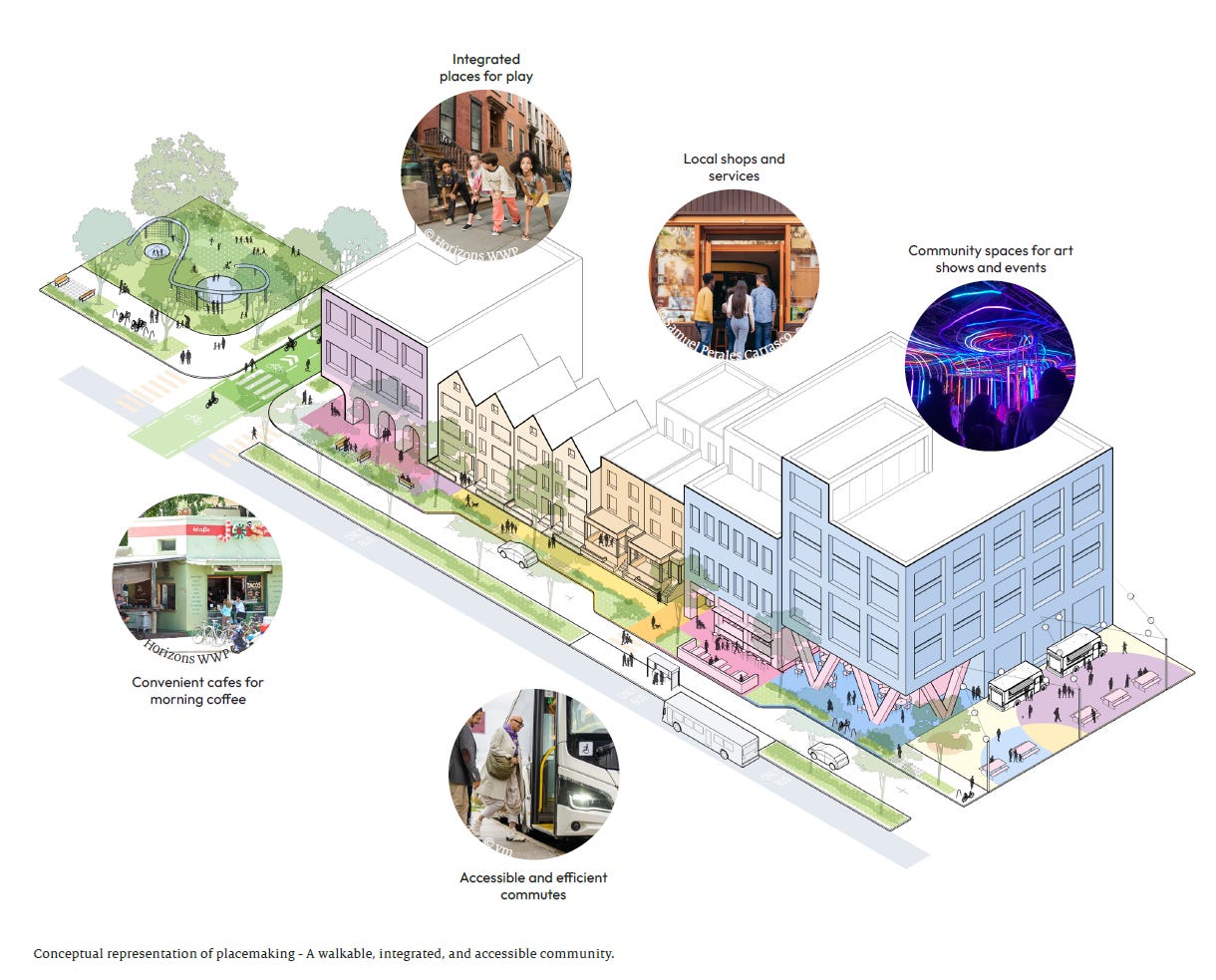
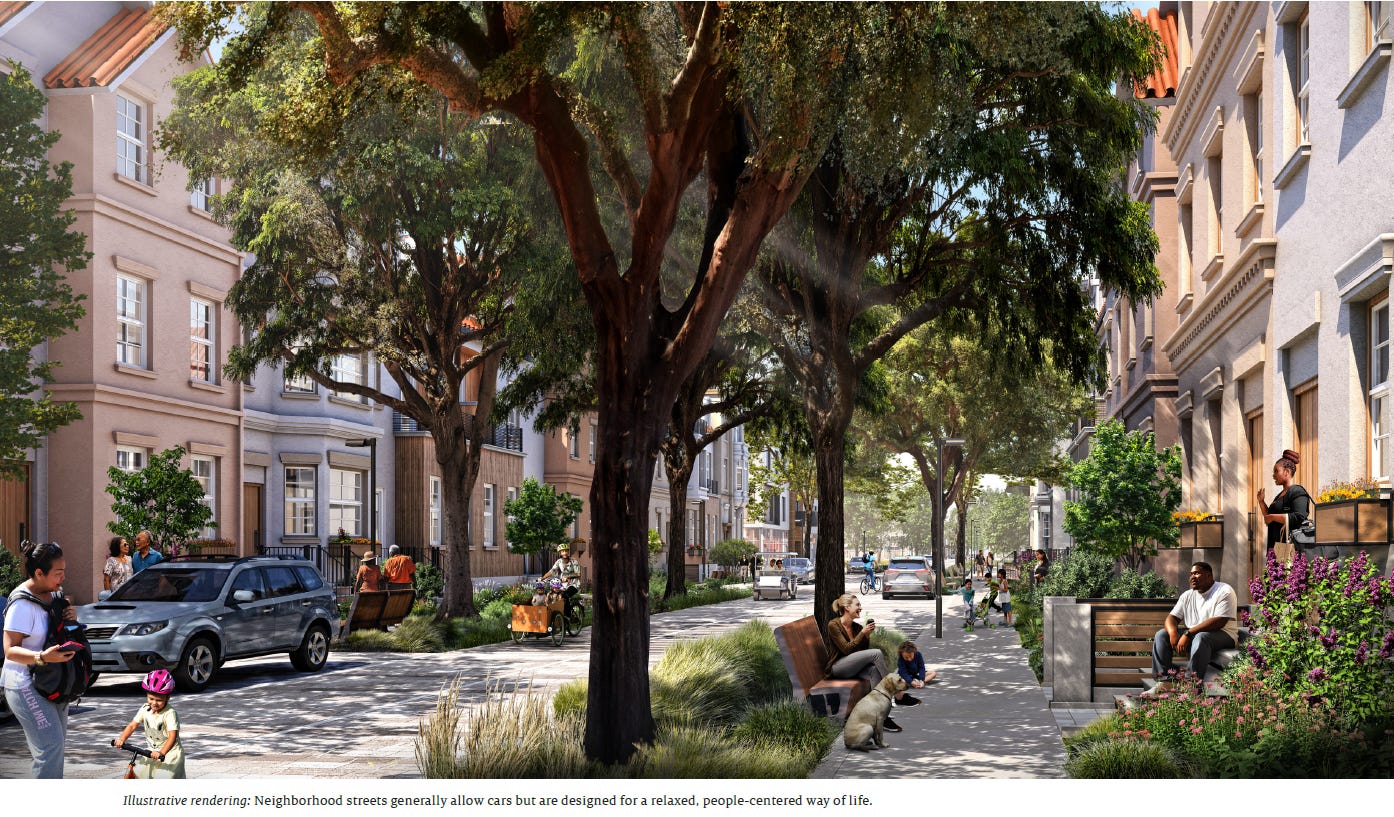

The density of this new town is unprecedented by US standards.
My hope is that CF can get this rolling, and it will allow less capitalized visionaries to pursue something similar.
How realistic is it to expect the idea of parking at the edges of the city to persist? Given its location, I would assume that a lot of its residents would be commuting at least a couple of times a week to Sacramento or the Bay Area. If people are making those long commutes, won’t they want their cars to be as close as possible in order to reduce their time spent commuting?